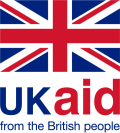You are here
Share
Related Links
Attachments
Certification-Verification-Governance-SEAsia_0.pdf
Keywords
Authors/Partners
World Bank
Certification as a Tool for Sustainable Forest Management and Good Governance - South East Asia
CHALLENGE
Although only 5% of the world's forests are located in Southeast Asia, the region accounted for about 17% of global forest loss in 2000 to 2010: An area about the size of Vietnam was deforested in the past decade. Illegal logging is one major force driving deforestation and degradation. This results in loss of biodiversity, tax revenue and the potential of forest resources to contribute to poverty reduction.
In tropical regions, the challenge of improving forest management to meet certification standards, and increasing pressure to prove timber legality, has led to development of verification schemes. These schemes offer third-party assurance of legality, and, potentially, a step-wise approach to full certification.
However several issues need to be addressed:
- There are several well established certification schemes and an increasing number of verification schemes. The extent to which they offer proof of compliance with national laws and regulations is not well understood.
- Certification is seen as a complementary tool for law enforcement to stimulate compliance and reduce illegality; however its enforcement power might be limited by its voluntary nature and other constraints.
APPROACH
Currently there is a proliferation of private and official standards. These standards range from those that apply to all (legality), to those that are compulsory to all exports to the EU and US markets (EU timber regulation and amended Lacey act), and finally to completely voluntary schemes (SFM certification).
With support from PROFOR, the World Bank's East Asia staff in collaboration with the Bank's Agriculture and Rural Development Department examined linkages between certification/verification and forest law enforcement and how the two might be strengthened. The study compared different schemes, considered the proof of legal compliance that they offer, and examined their credibility.
The study focused on certified and verified production forests in Vietnam, Lao PDR, Thailand, Indonesia and Malaysia, and covered both plantations and natural forests.
MAIN FINDINGS
This activity produced a discussion paper assessing the certification and verification systems currently in place in Southeast Asia, which was published in December 2012 and is available on this page.The report shows that:
- Voluntary certification is at early stages of acceptance and application in the Southeast Asian case study countries, where there is significant potential to expand use of this tool. Only 11% of the production forest area is certified and less than 6% of forest plantations. However, the countries in the region are aiming to increase timber production from forest plantations and consequently promote certification of these areas. It is estimated that the potential to increase certification in natural and plantation forests in the case study countries is large, particularly in Indonesia and Malaysia.
- Continued pressures from environmentally-sensitive markets, especially in Europe, North America, Oceania and Japan, will oblige producer countries to provide evidence of legality and sustainability if they wish to retain their export markets. Legality verification, third party certification and stepwise programs offered by independent third party assessors can potentially provide evidence of legality and sustainability to meet the requirements of these discerning markets.
- Although verification and certification schemes and standards differ, there is evidence that the principles, criteria, policies and standards are becoming increasingly harmonized. Certification increasingly includes both legality and sustainability criteria, or at least certification and verification are functioning in a more mutually supportive way. The scope of legality and law enforcement is also increasingly being extended beyond immediate forest laws and regulations, creating new challenges.
- FLEGT VPAs and voluntary certification processes differ in standards, scope, approach and procedures, but they are potentially mutually supportive. VPAs can benefit from verification and certification traceability mechanisms and auditing processes at the forest management unit level. Voluntary approaches can also pioneer best practice approaches in countries that are not ready for nation-wide regulatory approaches. In turn, voluntary certification may benefit from VPAs, particularly in creating greater clarity on legality definitions, standards, indicators and verification procedures, multi-stakeholder processes in the sector and enhanced transparency and public disclosure.
- Financial credit institutions seeking to evaluate the legality and sustainability risk of their forestry clients use verification and certification as useful tools to reduce environmental, social and governance risk. In fact, many international commercial banks have policies that require forest certification schemes, some with a stated preference for FSC certification. As most international commercial bank staff are not specialists in SFM, third party certification fulfills a critical role in monitoring legality and sustainability of forests and forest products trade.
- Local banks in Southeast Asia have focused on traditional financial risk and had little reference to social or environmental criteria or a prerequisite of certification. As a significant funding source for the forestry sector in Southeast Asia, this should be a key target area where outreach could encourage greater legality and sustainability awareness in their “know your client” guidelines.
RESULTS
The report was presented at the ITTO workshop on "Tracking Technologies for Forest Governance" in Kuala Lumpur, Malaysia, in May 14-17, 2012, which was attended by a wide range of participants from national agencies in Asia, Africa, and Latin America, international organizations, including representatives from the CITES Secretariat, EU-EFI FLEGT Asia Regional Program, FAO, ITTO, the private sector and NGOs.
For stories and updates on related activities, follow us on twitter and facebook, or subscribe to our mailing list for regular updates.
Author : World Bank
Last Updated : 02-24-2017








